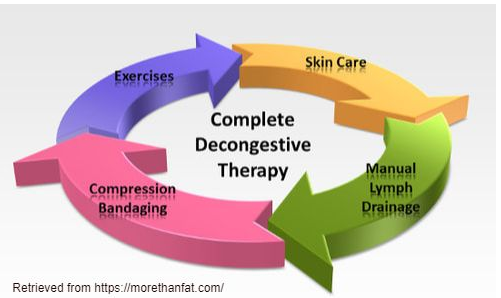Combined Decongestive Therapy (CDT) is an intensive program that combines many different treatment approaches including bandaging, compression garments, manual lymph drainage (MLD), exercise, education, and self-care.
How It Works
Combined Decongestive Therapy (CDT) is considered the gold standard of treatment for progressed lymphedema. Many studies have demonstrated the effectiveness of CDT in improving lymphedema symptoms such as swelling and pain. Lymphedema can be managed with effective treatment, but there is no cure!
The therapy has two phases.
- Intensive phase: the goal is to reduce swelling with compression bandaging, lymphatic drainage, good skincare, and exercise. The Combined Decongestive Therapist is very involved during this phase.
- Maintenance phase: the goal is to keep your condition stable with a compression garment and ongoing skin care, regular exercise, and self-massage for lymphatic drainage. During this phase, you will take charge of your care and will learn which options work best for you.
Your treatment plan will depend on your stage of lymphedema, degree of swelling, and phase of treatment.
Combined Decongestive Therapy has the following four components:
- Manual Lymph Drainage (MLD): Manual lymphatic drainage gently moves the excess lymph out of a swollen area into healthy lymph vessels that drain into the bloodstream. It also reroutes lymph into existing pathways to improve the lymphatic return to the bloodstream.
- Compression garments: The use of compression garments increases tissue pressure and is effective in reducing and maintaining swelling. It improves venous and lymphatic return, supports muscle pump during activity, and slows down progression.
- Education: Includes basic information about the lymphatic system and the causes of lymphedema, as well as prevention and management skills, including self-massage techniques, skin care and risk reduction strategies, and the use and care of compression bandages/garments.
- Exercise Program: A balanced exercise program includes Diaphragmatic breathing, stretches, strengthening, and aerobic exercises. They are all important aspects of maintaining a decrease in swelling. A specific exercise program to follow at home is provided.


